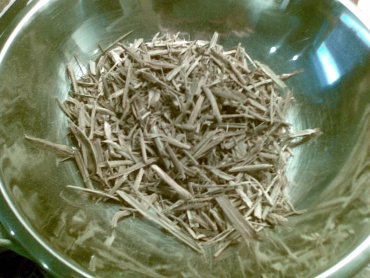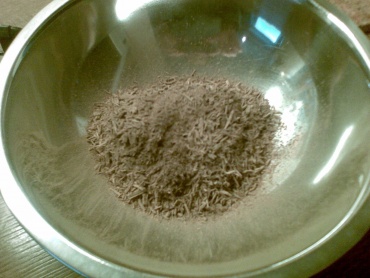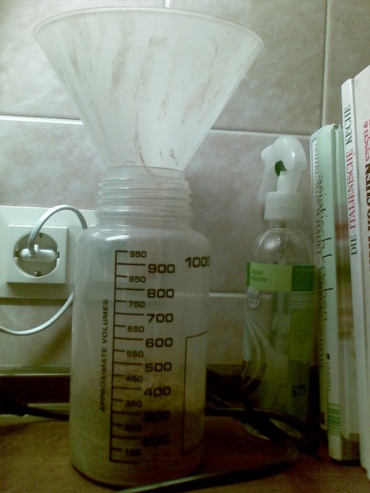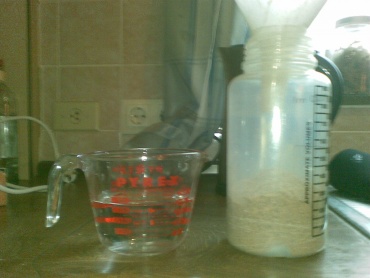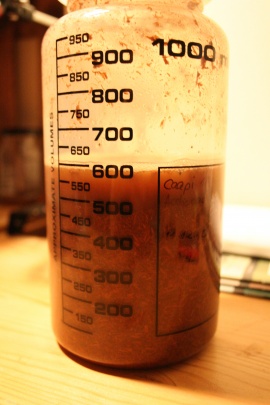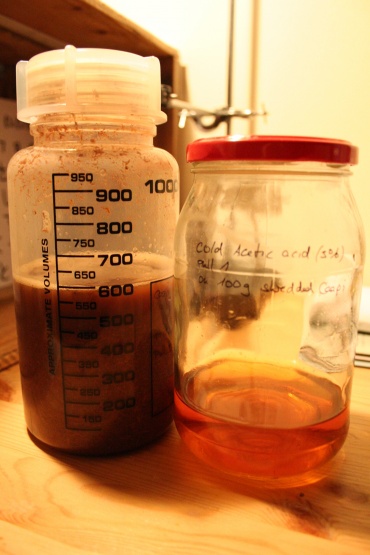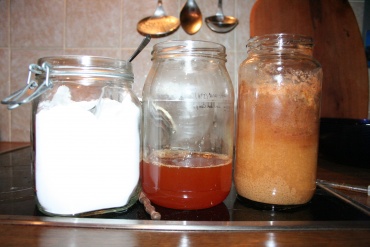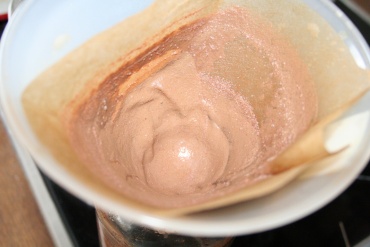Difference between revisions of "Enoons Cold Caapi Tek"
TheTraveler (Talk | contribs) |
|||
| (One intermediate revision by one user not shown) | |||
| Line 6: | Line 6: | ||
== Initial Notes == | == Initial Notes == | ||
| − | I performed a cold acetic acid extraction of white Caapi | + | I performed a cold acetic acid extraction of white Caapi. A previous extraction via [[Easy Caapi Vine Alkaloid Extraction Guide]] <ref>Easy Caapi Vine Alkaloid Extraction Guide [[Easy Caapi Vine Alkaloid Extraction Guide]]</ref> boiling 5x45min yielded ~ 1.2% alkaloids after several prufication steps. So I want to see if I can reach the same with a cold extraction. |
| Line 59: | Line 59: | ||
Conclusion: Save some energy and soak your vine at RT! | Conclusion: Save some energy and soak your vine at RT! | ||
| − | Note: I suggest using lye as in Gibran's tek, for several reasons: a) precipitates usually settle in a way that makes decanting easier. using Na2CO3 can cause a strange kind of emulsion. b) precipitates are much cleaner and require much less A/B steps. | + | |
| − | Using Na2CO3 is possible | + | '''Note''': I suggest using lye as in Gibran's tek, for several reasons: a) precipitates usually settle in a way that makes decanting easier. using Na2CO3 can cause a strange kind of emulsion. b) precipitates are much cleaner and require much less A/B steps. |
| + | Using Na2CO3 is possible for those that wish to avoid lye for whatever reason, as I've demonstrated above. But you will have to put in more effort to get the same purity, because for some reason the precipitation with Na2CO3 catches a lot of insoluble stuff that colors your product and adds dead/inactive weight to it making dosing more inexact. | ||
| + | |||
| + | Please remember safety precautions when working with dangerous chemicals! | ||
== Reference == | == Reference == | ||
Latest revision as of 17:43, 26 July 2015
| Note: | This page is a transcription of Enoon's Cold Acetic Acid Extraction of Caapi Tek [1]. The content is to remain accurate as such. |
Contents
Initial Notes
I performed a cold acetic acid extraction of white Caapi. A previous extraction via Easy Caapi Vine Alkaloid Extraction Guide [2] boiling 5x45min yielded ~ 1.2% alkaloids after several prufication steps. So I want to see if I can reach the same with a cold extraction.
Method
Step 1 - Shred Vine
Begin with whole or partially shredded vine and shred it up as much as possible. This will allow the alkaloids to migrate to the solution easier.
Step 2 - Collect and Add Acid
This is added to my favorite PP container and approx. 300ml of 3% acetic acid is added.
Step 3 - Soak
Allow this to soak at room temperature (RT) for 3 days / 72 hours with occasional shaking.
Step 4 - Filter and Collect
After soaking for 72 hours, filter the liquid and set aside. Add another 300ml of 3% acetic acid to the vine and allow to soak for another 72 hours.
Step 5 - Repeat
Repeat step 4 again 4 times for a total of 5 x 3 day soaks.
Combine the pulls and reduce a bit. After you have reduced the pulls to a manageable level, base with sodium carbonate or lye.
The orange liquid is decanted off and the alkaloids are washed with fresh distilled water 4 times. Using sodium carbonate will require you to perform more cleaning steps than using lye but it will work in the end nonetheless. Your end product should be white or off white. If it's darker like in the pic below, another A/B step for getting rid of the impurities is in order. Please refer to Easy Caapi Vine Alkaloid Extraction Guide for purification procedures.
Step 6 - Filter
After you are finished rinsing/washing the alkaloids, it's time to filter them. If you do not have a food dehydrator it is recommended to hang the filter to allow it to dry from all sides. Alternately you can try to decant as much water as possible and let the rest evaporate on a pyrex dish.
Yield & Conclusion
Yield: After 5 x 3 day pulls, the yield was 1.2% which is the same yield as doing 5 boils.
Conclusion: Save some energy and soak your vine at RT!
Note: I suggest using lye as in Gibran's tek, for several reasons: a) precipitates usually settle in a way that makes decanting easier. using Na2CO3 can cause a strange kind of emulsion. b) precipitates are much cleaner and require much less A/B steps.
Using Na2CO3 is possible for those that wish to avoid lye for whatever reason, as I've demonstrated above. But you will have to put in more effort to get the same purity, because for some reason the precipitation with Na2CO3 catches a lot of insoluble stuff that colors your product and adds dead/inactive weight to it making dosing more inexact.
Please remember safety precautions when working with dangerous chemicals!
Reference
- ↑ Cold Acetic Acid Extraction of Caapi[1]
- ↑ Easy Caapi Vine Alkaloid Extraction Guide Easy Caapi Vine Alkaloid Extraction Guide
